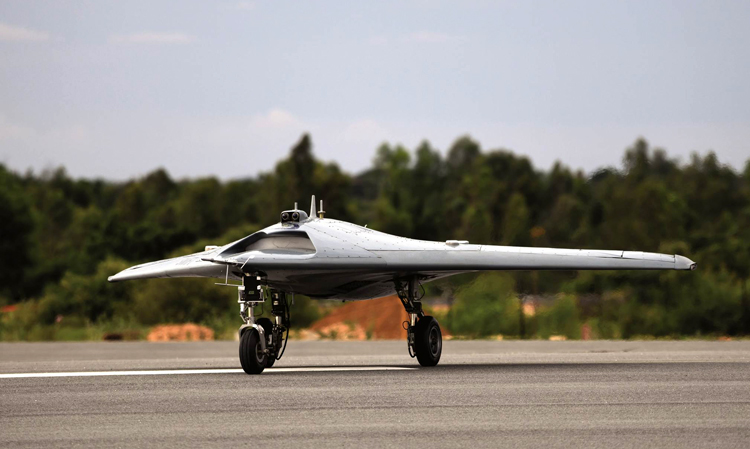AFI
SOURCE: AFI

In a strategic move to safeguard its burgeoning space assets, Pakistan has reportedly initiated discussions with China to acquire Anti-Satellite (ASAT) missiles. This development comes in the wake of India’s successful ASAT test, known as Mission Shakti, which demonstrated India’s capability to neutralize satellites in low Earth orbit, thereby posing a potential threat to Pakistan’s space infrastructure.
Pakistan’s space program, while not as extensive as India’s or China’s, has been making steady progress, focusing on both civilian and military applications. Satellites are becoming central to Pakistan’s strategic operations, including communication, reconnaissance, and navigation. The country currently operates several satellites, with the most notable being the PakSat-1R for telecommunications and the PRSS-1 (Pakistan Remote Sensing Satellite) for earth observation, which are crucial for both civilian and defense sectors.
Continue readingSOURCE: AFI

India’s decision to withdraw from the Fifth Generation Fighter Aircraft (FGFA) program with Russia has often been attributed to concerns over the aircraft’s technical shortcomings, including its limited stealth capabilities. However, the financial burden of the project appears to have been the decisive factor in India’s pullout.
The FGFA program, based on Russia’s PAK-FA or Sukhoi T-50 platform, was initially envisioned as a joint venture with a 50:50 design and work-share agreement. This collaboration promised India a stake in the development of a cutting-edge stealth fighter. However, as the program progressed, India’s participation became increasingly limited, with Russia retaining much of the design and development work.
Continue readingSOURCE: AFI

The Ministry of Defence (MoD) in India has embarked on three ambitious projects aimed at enhancing the operational capabilities of its armed forces through the integration of surveillance radars and sensors. These initiatives are designed to provide real-time, actionable intelligence for both offensive and defensive military operations across the Indian Air Force (IAF), Army, and Navy.
For the IAF, the focus is on creating a comprehensive ‘composite picture’ of the airspace through the integration of all national air surveillance radars. This integration will occur within the framework of the Integrated Air Command and Control System (IACCS). The IACCS is not just a collection of hardware but an advanced software platform that automates the command and control processes essential for air operations.
Continue readingSOURCE: AFI

From December 19 to 22, 2024, Hanoi hosted the Vietnam International Defence Expo, where Indian defense enterprises made a significant impact. Bharat Electronics Limited (BEL), Hindustan Aeronautics Limited (HAL), Bharat Dynamics Limited (BDL), Mazagon Dock Shipbuilders Limited (MDL), Defence Research and Development Organisation (DRDO), Larsen & Toubro (L&T), Neo Power, BrahMos Aerospace, and Runflat Tyre Systems were among the key participants, drawing considerable attention and fostering discussions on future Indo-Vietnamese defense collaborations.
Continue readingSOURCE: AFI

The Defence Research and Development Organisation (DRDO) is making significant strides in unmanned aerial technology with the development of a High Altitude Long Endurance (HALE) Unmanned Aerial Vehicle (UAV) specifically designed for Intelligence, Surveillance, Target Acquisition, and Reconnaissance (ISTAR) roles. This new UAV is poised to enhance India’s aerial surveillance capabilities with its advanced specifications.
The UAV is designed to be a 5-tonne platform, making it robust enough to carry substantial equipment for various mission profiles. It will have a payload capacity of 2 tonnes, allowing it to be equipped with a variety of sensors, cameras, and potentially offensive capabilities for ISTAR missions.
Continue readingSOURCE: AFI

The Gas Turbine Research Establishment (GTRE) under India’s Defence Research and Development Organisation (DRDO) is pushing forward with the development of the Kaveri Derivative Engine (KDE), also known as the Kaveri Dry non-afterburning engine. This engine version produces 46 kN of thrust (IRA SLS – International Reference Atmosphere Sea Level Static) but comes with a substantial weight of up to 1180 kg, which is on the heavier side for engines in its class, even without an afterburner.
The KDE’s weight is particularly notable because, even without the additional mass of an afterburner section, it matches or exceeds that of some engines equipped with afterburners. This discrepancy could limit its application in manned fighter jets where weight-to-thrust ratio is critical for performance.
Continue readingSOURCE: AFI

Shiva Texyarn Ltd, a well-established name in the textile industry, has clinched a significant contract from the Department of Military Affairs for the supply of 16,000 pairs of Nuclear, Biological, and Chemical (NBC) Suits, specifically the Permeable MK V model. This deal marks a notable achievement for the company, reflecting its prowess in producing high-quality protective gear that adheres to the rigorous standards of the Indian Armed Forces.
The Permeable MK V suits are engineered to meet the stringent standards required for modern defense operations. These suits are lightweight, durable, and capable of offering extended protection in extreme environments. Shiva Texyarn’s ability to meet these rigorous specifications highlights its manufacturing prowess and its commitment to supporting India’s defense preparedness.
Continue readingSOURCE: AFI

In a candid reflection on one of India’s largest defense procurement efforts, Air Marshal M. Matheswaran (retired), who was intricately involved in the tendering process for the 126 Medium Multi-Role Combat Aircraft (MMRCA) for the Indian Air Force (IAF), has expressed regret over the decision to not proceed with the contract. “MMRCA should have gone through. It was a blunder not going for it,” he stated in an interview with the EurAsian Times, highlighting the potential benefits that were lost.
The MMRCA project, initially conceived in August 2000 with a proposal to acquire 126 Mirage 2000 II aircraft, underwent significant changes. By 2004, the original proposal was discarded, and in 2007, a new initiative was launched to procure 126 aircraft under the MMRCA banner. This process, which lasted nearly 15 years, involved extensive evaluations and negotiations before being abruptly terminated in 2016, with the Indian government opting instead to purchase 36 Rafale jets directly from France as an emergency measure.
Continue readingSOURCE: AFI

India is on the brink of a significant advancement in unmanned combat aerial technology with its top-tier project, the Remotely Piloted Strike Aircraft (RPSA). As preparations for the crucial Cabinet Committee on Security (CCS) papers gather pace, the project stands at a pivotal juncture, awaiting the momentum that CCS approval could provide.
The journey towards making the RPSA a reality involves rigorous scrutiny at the highest levels of government. The CCS approval is not just a formality but a vital step that could unlock funding, resources, and strategic focus necessary for this high-stakes project. “The preparations for the CCS papers are underway,” an official source revealed. With the Indian Air Force (IAF) expressing strong confidence in the RPSA’s potential, there’s a palpable optimism that this could sway the CCS’s decision in favor of the project.
Continue readingSOURCE: AFI

The Indian Air Force (IAF) has been taken aback by the news that Pakistan is set to procure 40 J-35A fifth-generation stealth fighter jets from China. This development places Pakistan ahead of India in terms of deploying next-generation combat aircraft, with the IAF’s own fifth-generation fighter, the Advanced Medium Combat Aircraft (AMCA) MkI, not expected to enter service for another 7 to 9 years.
The introduction of J-35A jets into the Pakistan Air Force (PAF) will give Pakistan a significant technological edge over India for the foreseeable future, potentially affecting the strategic balance in South Asia.
Continue readingSOURCE: AFI

The political landscape in Canada has been witnessing a significant shift, with the possibility of a Khalistani sympathizer ascending to the role of Prime Minister in the near future. This scenario, while speculative, is grounded in the increasing influence of the Sikh community within Canadian politics and the vocal support for Khalistani causes by certain political figures.
Here’s an analysis of this potential development and its repercussions on India-Canada relations.
Continue readingSOURCE: AFI

The Confederation of Indian Industry (CII) has made a compelling case to the Indian Government for extending the Production Linked Incentive (PLI) scheme to include the manufacturing of electric Vertical Take-Off and Landing (eVTOL) aircraft and their components. This push comes at a time when the global landscape of urban air mobility is rapidly evolving, and India aims to position itself as a leader in this innovative sector.
Several Indian startups stand to gain significantly from such an initiative. Companies like ePlane Company, sarla aviation, and Bluj Aero are at the forefront of eVTOL technology in India. The extension of the PLI scheme could provide these firms with the financial incentives needed to scale up their operations, invest in R&D, and bring their designs from concept to market. This would not only accelerate technological development but also foster job creation and skill enhancement within the country.
Continue readingSOURCE: AFI

The Light Combat Aircraft (LCA) Tejas, a flagship program of India’s indigenous defense manufacturing capabilities, marked 24 years since its maiden flight on January 4, 2001. While the platform has showcased India’s growing self-reliance in defense technology, the program has faced significant criticism for its sluggish pace of development, delays in production, and limited inductions into the Indian Air Force (IAF) even after more than two decades.
The LCA Tejas, developed by the Aeronautical Development Agency (ADA) and manufactured by Hindustan Aeronautics Limited (HAL), was envisioned as a fourth-generation lightweight, multi-role combat aircraft to replace India’s aging fleet of MiG-21 fighters. It was designed to strengthen India’s defense manufacturing ecosystem and reduce reliance on foreign imports.
Continue readingSOURCE: AFI

As Aero India 2025 approaches, the aerospace community is buzzing with anticipation for new program announcements and project unveilings. However, this enthusiasm is often tempered by the reality of prolonged development timelines in India’s defense public sector undertakings (DPSUs).
Historically, the announcement of new aerospace programs at events like Aero India has been accompanied by the display of scale models, symbolizing future aspirations. Yet, the journey from these announcements to actual flying prototypes typically spans 5-6 years or more. This extended timeline has frequently led to criticism and skepticism about the efficiency and urgency of India’s defense projects.
Continue readingSOURCE: AFI

The Indian Army is making significant strides in operational adaptability by integrating the ATOR N1200 Specialist Mobility Vehicle (SMV) into its arsenal, specifically tailored to conquer the daunting terrains of Sikkim. This innovative vehicle, known for its unparalleled versatility and robustness, is transforming how the military navigates through some of the world’s most challenging landscapes, from snow-laden peaks to rugged, uneven ground.
The ATOR N1200, an indigenized version of the SHERP N1200 from Ukraine, is designed to operate in environments where conventional vehicles falter. With its amphibious capabilities, the ATOR can traverse not only land but also water bodies, making it ideal for the diverse and unpredictable terrains of Sikkim. Its ability to maneuver through dense forests, over rocky outcrops, and across rivers and lakes showcases its true “go-anywhere” potential.
Continue reading